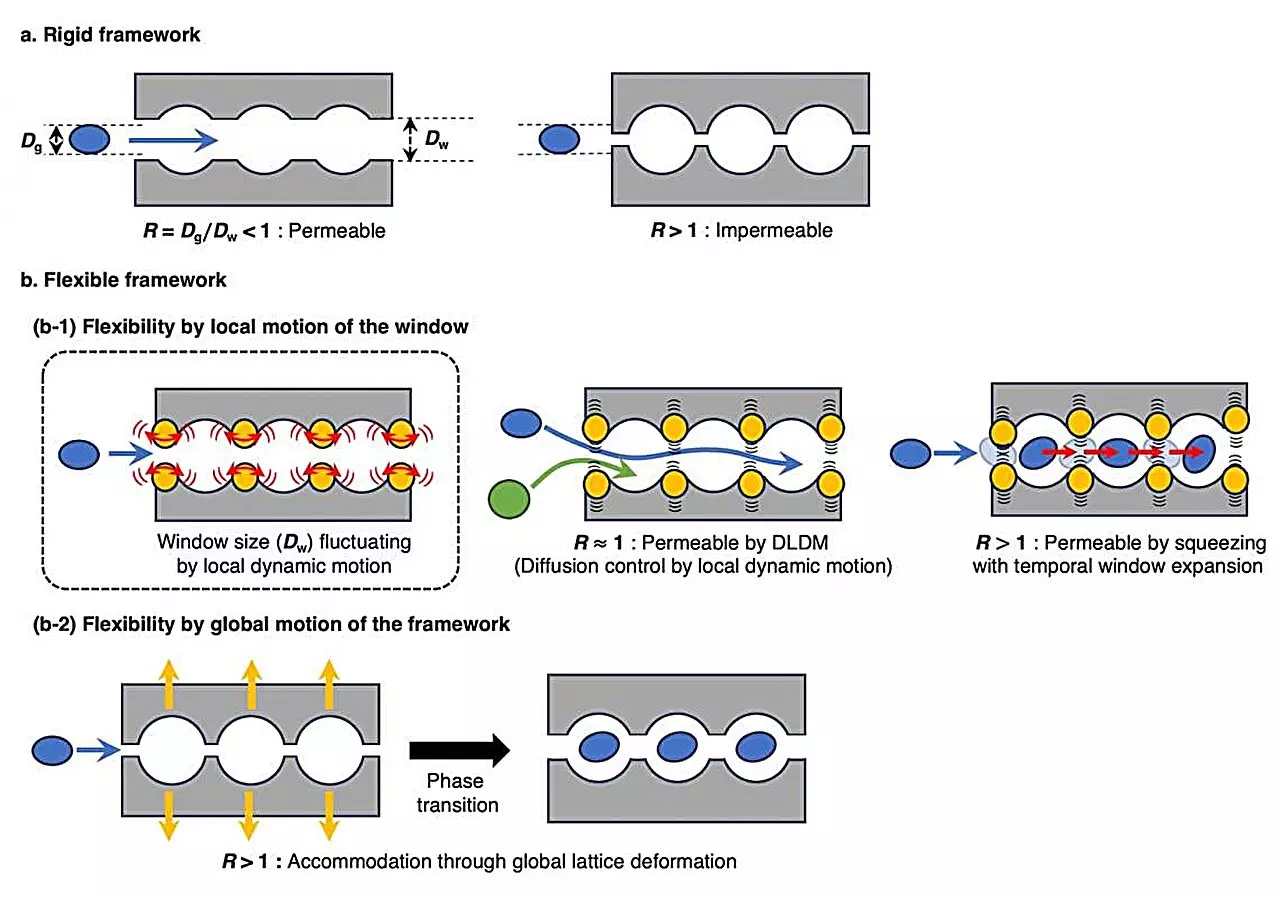Recent research has fundamentally altered our comprehension of gas storage materials, specifically through the lens of porous coordination polymers (PCPs), commonly referred to as metal-organic frameworks (MOFs). A pivotal paper published in *Communications Materials* reveals that the earliest known PCP, identified in 1997, not only exhibited a significant capacity for gas adsorption but also belonged to a category labeled as “soft” PCPs—a classification previously thought to be introduced only in the last few years. This illuminating finding opens new avenues for research and application within the evolving landscape of gas storage solutions.
At their core, PCPs consist of metal ions intricately connected by organic molecules, creating an extensive network of minuscule pores. This unique architecture plays an essential role in allowing these materials to effectively entrap and store gases and liquids. The implications of PCPs extend across multiple domains, including energy storage and emission control technologies. For instance, Susumu Kitagawa from the Institute for Integrated Cell-Material Sciences at Kyoto University likens their function to that of a sponge, specifically designed to absorb gases instead of liquids. This analogy encapsulates the extraordinary versatility of PCPs, particularly in the context of clean energy initiatives and industrial applications that require precise gas filtering capabilities.
The “Soft” Nature of PCPs and Its Significance
The term “soft PCP” characterizes a material’s inherent ability to undergo structural modifications in reaction to its gaseous environment. Unlike rigid frameworks, these flexible materials adapt dynamically to enhance gas retention—akin to how a sponge adjusts to soak up more water. Hirotoshi Sakamoto, the study’s primary author, emphasizes that this adaptability not only optimizes gas storage capacity but also enhances the efficacy of PCPs in a variety of uses. Such qualities are increasingly vital in scenarios such as hydrogen storage—where efficiency can significantly impact the viability of clean energy solutions.
In the quest to reassess early PCPs, the research team employed sophisticated methodologies such as single crystal X-ray diffraction. These modern analytical techniques unravel the intricate organization of atoms within these materials and elucidate the structural changes they undergo upon gas interaction. A notable example from their study was the cobalt PCP known as Co-TG, developed over 25 years ago. Initially celebrated for its gas-adsorbing prowess, recent analysis has uncovered its capacity to slightly alter its shape, thereby increasing its gas-holding potential. Ken-ichi Otake, a co-author of the study, remarked on the previous oversight regarding the flexibility of these early PCPs, underscoring the groundbreaking nature of these findings.
By affirming that early PCPs were pioneering representatives of soft PCPs, this research underscores their fundamental role in the advancement of gas storage technologies. Such insights can stimulate innovations in critical areas such as carbon dioxide capture, gas separation technologies, and the design of more efficient energy storage systems like hydrogen fuel cells. The authors of the study advocate for the re-examination of historical materials data through the prism of modern techniques, illustrating the significance of revisiting established scientific assumptions in light of new evidence.
The revelation that early PCPs possess a “soft” nature not only redefines our understanding of gas adsorption methodologies but also opens doors for future explorations into enhancing the functionality of these adaptable materials. Kitagawa notes that this principle—deriving new insights from historical contexts—demonstrates that established fields of science can greatly benefit from fresh perspectives. As we venture further into the realms of material science, revisiting and re-evaluating the past remains essential for driving innovation and sustainable solutions. The implications of this research could resonate through various industries, paving the way for more advanced technologies aimed at tackling contemporary environmental challenges.


Leave a Reply